Last Updated: June 4, 2024
Costa Rica is an ecotourism destination filled with a variety of jungle creatures. But have you ever thought about what happens to these animals when they are injured in the wild? Behind the scenes in busy tourist destinations are organizations that rescue and rehabilitate wildlife. In this post, we’ll tell you about one such organization near Manuel Antonio called Kids Saving the Rainforest. We recently learned more about their work on a tour. They offer a general tour of the center along with a volunteering tour for a more hands-on experience.
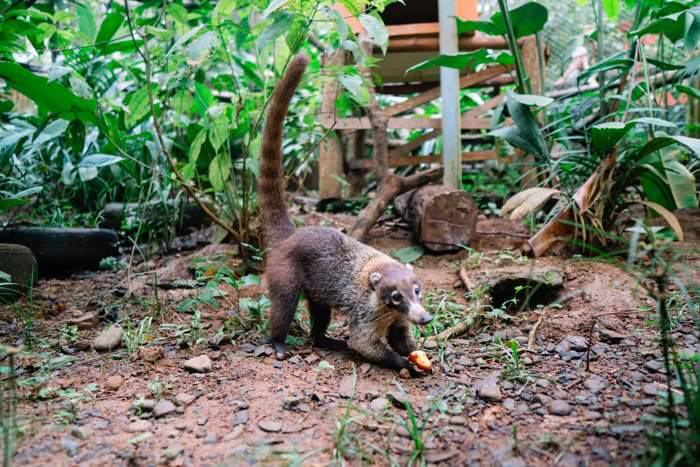
Background on Kids Saving the Rainforest
Kids Saving the Rainforest has an interesting history.
It all started in 1999 with a couple of nine-year old girls. Concerned about what was happening to the monkeys in Manuel Antonio because of development, they set off to buy small portions of the rainforest for conservation. To raise money, they began painting rocks to sell to tourists. With only $160 in their pockets, they formed an administration for their new organization.
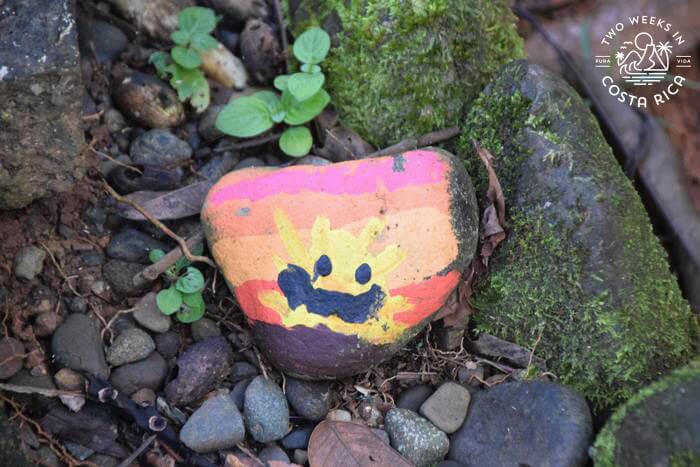
Soon people started bringing them injured animals that needed help. The organization slowly grew, and in 2005, they opened a formal rescue center. In 2008, they started the wildlife sanctuary. This is a place where animals can live out the rest of their lives if they are unable to be released back into the wild.
Today, Kids Saving the Rainforest is an influential non-profit organization with a full staff, including biologists and veterinarians. Its main goal is to protect the wildlife of Costa Rica’s Pacific coast through their rescue center and sanctuary. They also work to minimize the causes of why animals need to be rescued through educational programs, reforestation, and wildlife bridge projects.
On a visit to Manuel Antonio, you’ll see their blue “monkey bridges” in key locations around town. These simple ropes help animals cross the street and avoid being hit by cars or electrocuted by crossing on power lines. These bridges aren’t just for the monkeys, though. Kids Saving the Rainforest has found that 25 different animal species use them.
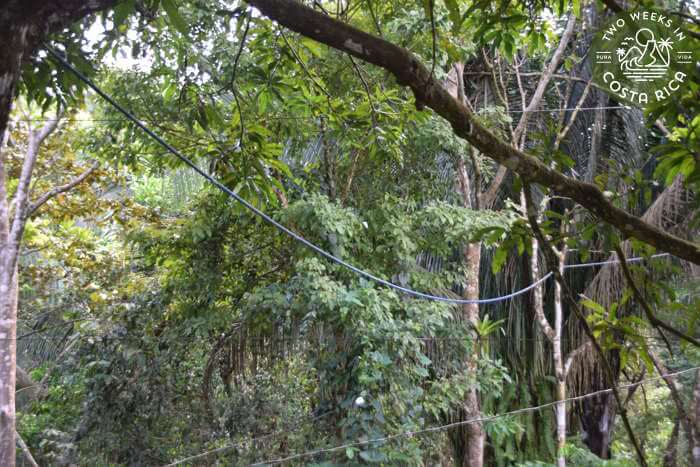
Kids Saving the Rainforest Sanctuary Tour
Taking a tour of the rescue center and sanctuary is one way that you can help support the important work of this organization. It’s also a great way to see wildlife up close.
Introduction
Our tour started at the Kids Saving the Rainforest facility in Quepos, about 25 minutes from Manuel Antonio.
We met Rowan, a friendly volunteer from the Netherlands who would be our guide. A big part of the team at Kids Saving the Rainforest are student volunteers who come from around the world for the chance to work with jungle animals.
Walking Around the Property
Rowan started our tour outside with some interesting facts to teach us a bit about the ecology of the rainforest.
Under a giant blue banyan tree, we learned that about 100 different species lived in this one tree alone. It was covered in bromeliads, so-called air plants, and even had a vanilla vine hanging down.
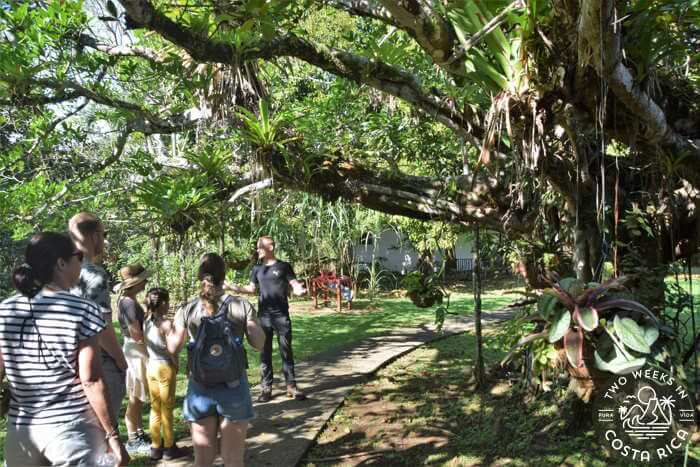
He went on to show us one of Costa Rica’s most important crops, sugar cane. We learned that they press it and give the juice to the animals at the center. The animals also will bite on the hard exterior to get the juices then spit out what they don’t want.
Kids Saving the Rainforest is working now to plant more sugar cane and other crops on their large property in the hopes of becoming more self-sustainable. Not only do they need fresh fruits and vegetables for their staff and guests, but also to feed the animals.
Continuing on, he pointed out some giant mounds on the ground. These were the nests of leaf-cutter ants, those small ants known for carrying pieces of leaf matter back to their nest. Rowan explained about the intricate hierarchy of an ant colony and why these tiny creatures are so important.
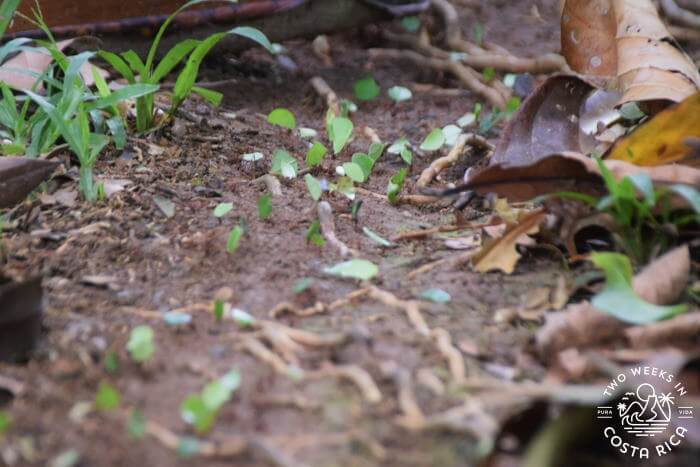
Animal Kitchen
After learning more about some other insects and plants on the property, we set off for the wildlife sanctuary.
Before meeting the animals, we made a stop at the Wildlife Animal Kitchen where they keep the food and medicine.
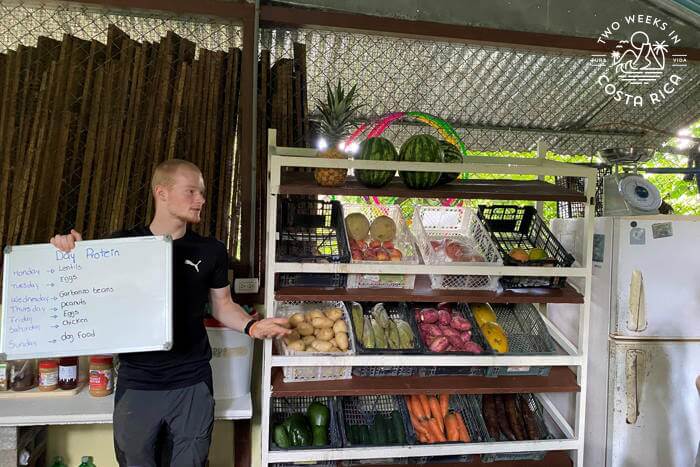
Inside was dry-erase board with the names of each animal currently under their care. It gave information on what they were eating and any medication they needed to take. Rowan explained that each animal is on a carefully planned diet to keep them healthy.
Touring the Sanctuary and Meeting the Animals
Continuing on the path, we came to an area with several enclosures. These were all located in one main area.
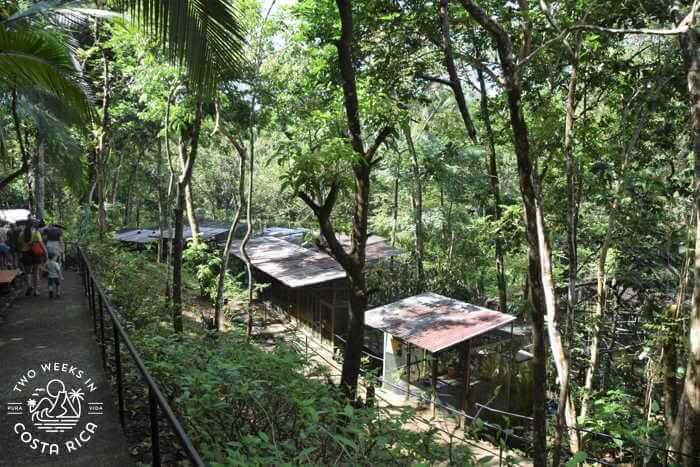
Great Curassow and Sloths
As we were approaching the first enclosure, we heard a strange clucking noise. It was coming from a Great Curassow. This is a large turkey-like ground bird. The poor Curassow had been illegally kept with chickens on a farm and had taken on some of their characteristics, hence the clucking.
The next enclosure we visited had some two-toed sloths. At the time of our tour, these were the only sloths they had at the property. All the three-toed sloths had been successfully released, which was great news.
These adorable two-toed sloths were cuddled up in a piece of fabric hanging behind the metal fence, almost like a hammock. One of them nicknamed Senora Donna had been electrocuted, which can happen when animals are on uninsulated electricity lines. Kids Saving the Rainforest rehabilitated and then released her. One week later, the poor creature was then hit by a car when crossing the road and broke her leg.
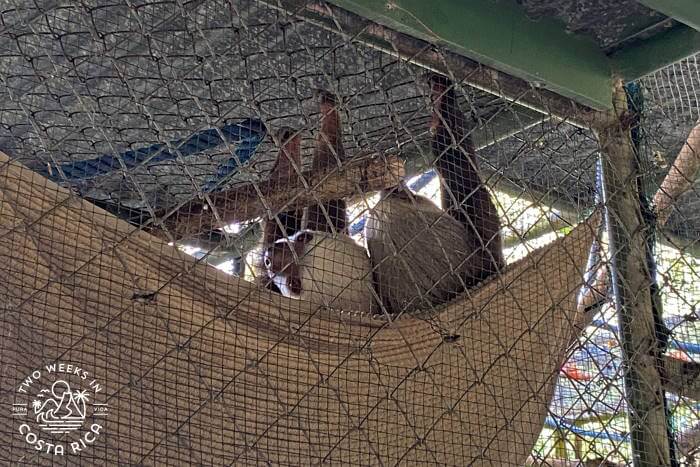
Marmosets
Next to the sloths were marmosets. These small, adorable animals are in the primate family but not native to Costa Rica. They are at Kids Saving the Rainforest after being used in a research project about breeding. Instead of trying to release the animals, the research center dropped them off at the center to avoid having to do paperwork.
The marmosets now live there permanently and are well known among staff and visitors. Rowan told us that these frisky creatures jump and bite volunteers when they enter the cage. They also like to get on the staff’s shoulders and keep moving from one side to the other.
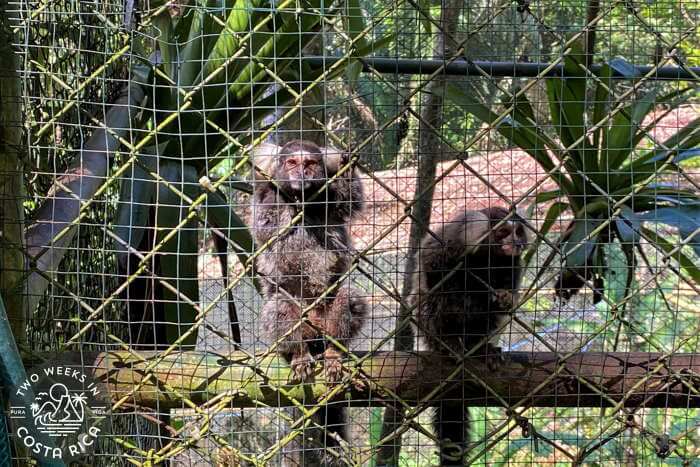
We continued down the path, learning the story about each animal. Some of the other animals we met were two Geoffroy’s Tamarin, white-faced monkeys, kinkajou, coati, collared peccaries, and a raccoon.
Parrots
There also were a lot of parrots. Some people in Costa Rica like to keep birds as pets and teach them to talk. One person had taken in some White-crowned parrots without realizing that this species is quiet and doesn’t talk.
Some other Red-lored amazon parrots also were kept as pets. One can make an ambulance noise, and another can say hola and laugh like a person. Since these birds have fully clipped wings, they can’t survive in the wild.
Monkeys
One of the most memorable animals was Nina the spider monkey. Spider monkeys are fascinating because they use all their long limbs and tail to move around. They are one of the most endangered monkey species in Central America because of habitat loss, hunting, and the illegal pet trade.
Nina’s story is that she lived in a mansion and then was sold to the circus where she got severely burned. She’s now 32 years old and was one of the first animals at the center. Nina now has arthritis, which they give her medicine for. She shares an enclosure with a young spider monkey named Darwin. He also lived with humans but was disowned when he broke his owner’s hand. The two get along well together and Darwin is very protective of Nina.
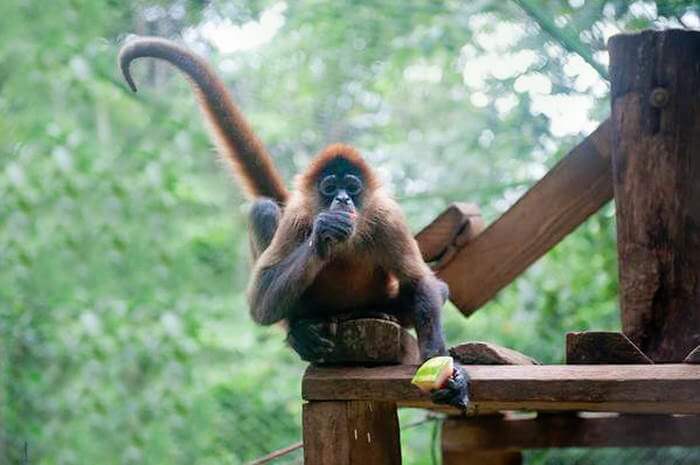
Clyde, the squirrel monkey, is also a permanent resident. He was found as a baby. They rehabilitated him and tried to release him with a troop of squirrel monkeys in the area where he was found, but he didn’t want to go. He turned around, ran away from group they were trying to introduce him to, and went back to the staff.
It was fascinating to learn about all the work that Kids Saving the Rainforest does for each animal.
While there are many animals that will live out their lives at the center, many others are able to be released. Kids Saving the Rainforest has about a 40% success rate for release. This is significant, as other centers have only 20-25% success. At the time of our visit, a Spectacled owl, Brown Booby (sea bird), and green sea turtle were either in the vet clinic being treated or recently released.
Snack
After visiting with the animals, Rowan brought us back to the reception area where we got to cool off and enjoy some fresh juice and fruits.
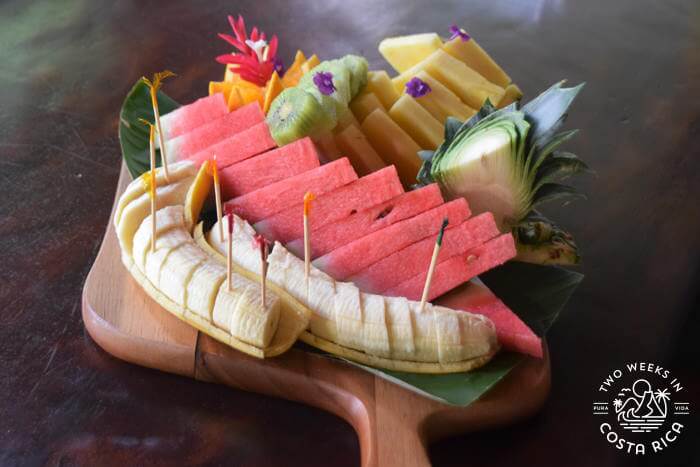
Planning Your Visit to Kids Saving the Rainforest
Tour Options
Regular Tour
The most popular tour is the tour of the sanctuary that we did.
Cost: $60 per person adults. $45 per person children ages 3-17. Free for children under 3.
Offered: 9:00 a.m., 11:00 a.m., and 1:00 p.m. Closed Mondays.
Duration: 2-3 hours
Volunteering Tour
For those wanting more hands-on experience, there’s a longer volunteering tour. This starts with the regular tour. After, you’ll have lunch at their onsite restaurant then the volunteering portion will begin. You’ll be able to prepare food for the animals based on their special diets, help with feedings, prepare enrichment activities, clean the enclosures, and help with any other activities that may be needed that day.
Cost: $100 per person (recommended for ages 7 and up)
Offered: 9:00 a.m. to 4:00 p.m.
*Note that Kids Saving the Rainforest has a hands-off policy. Visitors are not able to touch or handle the animals. This is better for the animals and also required by Costa Rican law.
Booking a Tour
If you’d like to book a tour, we’d be happy to help. Just use the links below. Booking through us helps support our website!
Directions to Kids Saving the Rainforest
Kids Saving the Rainforest is located about 25 minutes from Manuel Antonio. It’s in a rural location. From Manuel Antonio, you’ll drive to the main highway, Highway 34, and through the palm fields to get there. They have very good signs along the way.
Here is a Google Map with the location.
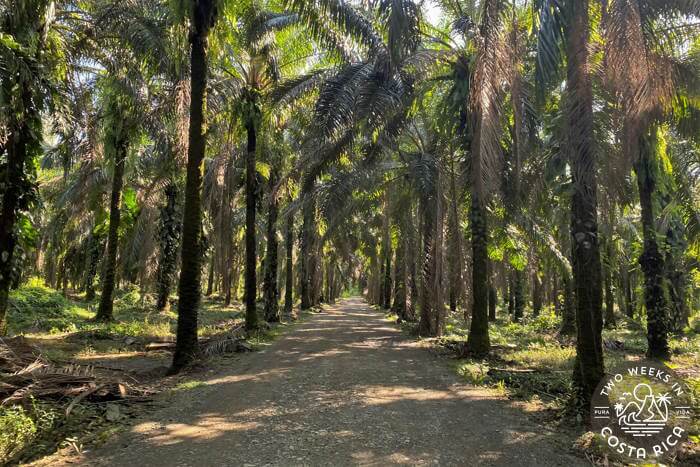
If you won’t have a rental car, transportation is available for $6 per person.
Ways to Help
Go on a Tour: A great way to help this wonderful organization is to simply go on one of their tours. All proceeds go to the animals and projects.
Amazon Wish List: Many things in Costa Rica are hard to find or very expensive. Kids Saving the Rainforest has a wish list on Amazon with some of the supplies and equipment they need if you would like to bring something along with you.
Donate: You also can donate through their website. Specific projects are available for sponsorship so you could help build a new monkey bridge, support environmental education in local schools, or even help buy incubators for the baby animals they take in. Here is a link to the different options. They are a US 501(c)(3) non-profit organization.
Stay with Them: Kids Saving the Rainforest also has three cute cottages that are available to rent through their onsite lodge called the Blue Banyan Inn. There was a family on our tour staying in one of them and they were having a great time.
Conclusion
Kids Saving the Rainforest is an important, well-respected wildlife and conservation organization in Costa Rica. For most of our 10 years living in Costa Rica, we have lived within an hour or two of Manuel Antonio. It’s always great to catch a monkey using one of their bridges or hear a story about a sloth they saved. We hope you are able to enjoy one of their tours to experience their work for yourself.
Have a question about Kids Saving the Rainforest? Ask us below.
Looking for more information to plan your trip to Costa Rica? Here are some more articles.
Manuel Antonio Bee Farm: Not far from Kids Saving the Rainforest is an interesting bee farm. The owner of this small apiary is passionate about conservation and the bees.
7 Off-the-Beaten Path Things to Do Near Manuel Antonio: Learn about some of the lesser-known activities in the area. Includes hikes, chocolate tours, and a spice farm tour.
Packing for Costa Rica: The Essentials – Costa Rica has many different microclimates. Get a comprehensive list of what to pack with this post.


